
Poilievre vows to grant oil and gas industry’s entire wishlist
Conservative Leader Pierre Poilievre says he’ll fast-track approvals and scrap key rules that protect the...
When the sun sets in a bowl-shaped basin on Ana’miso mountain on Gitanyow lax’yip (territory) in northwest B.C., that means the sockeye salmon are running in Xsi’dax river. Historically, about 50,000 sockeye would come up this tributary of the Skeena. But this river, like so many, is suffering a devastating decline in abundance. These days, the spawning population is down to about 200 fish.
Farther north, Gitanyow territory around Meziadin Lake is bursting with life. The landscape supports the likes of wolves and grizzlies, mountain goats and martens, salmon and steelhead. About 75 per cent of the Nass River sockeye spawn in the watershed after an epic journey from the coast through Nisga’a territory.
“This area is super special,” Wing Chief Sk’a’nism Tsa ‘Win’Giit Joel Starlund told The Narwhal about an area Gitanyow Hereditary Chiefs plan to declare as the Ha’Nii Tokxw Indigenous Protected Area — with or without support from the provincial government.
Eight years ago, most of the Nass River sockeye were protected by the freshly minted 24,000-hectare Hanna-Tintina Conservancy. But since then, the sockeye populations that spawn inside the conservancy’s boundaries have been in steady decline in part due to temperature changes in the creeks. Now, the healthiest remaining populations spawn primarily in glacial-fed creeks outside of the protected area. Those creeks — Strohn and Surprise — face the threat of increased mineral exploration.
After four years of trying to work with the province to protect an additional 30,000-hectare area around the conservancy through official channels, the chiefs have decided to move forward with an Indigenous Protected Area.
Indigenous Protected Areas, also called tribal parks or Indigenous Protected and Conserved Areas, are areas conserved under Indigenous law, through an assertion of a nation’s Rights and Title.
The Ministry of Environment and Climate Change Strategy declined an interview request, but told The Narwhal it welcomes Indigenous Protected and Conserved Area proposals.
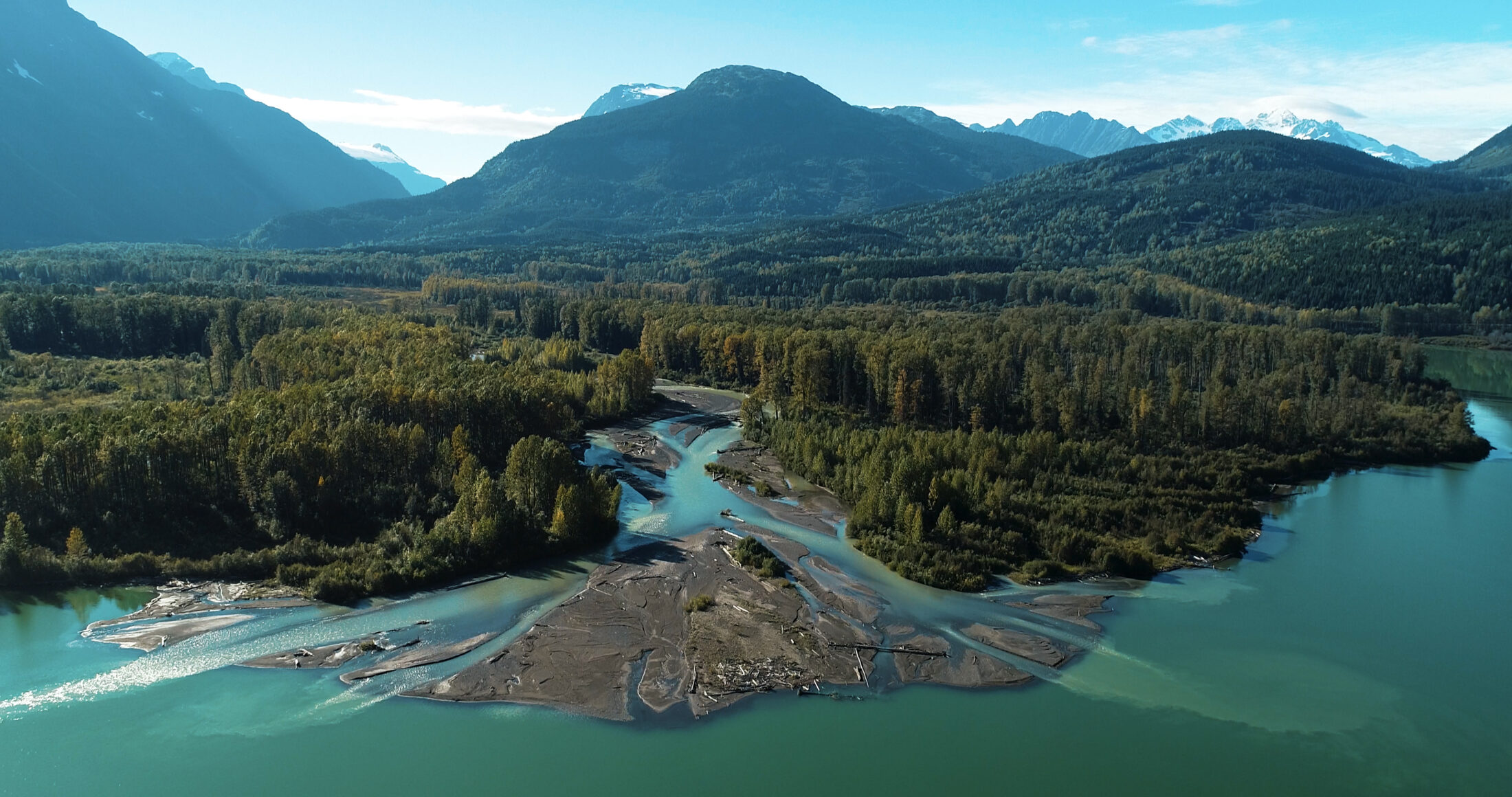
Meziadin Lake: the glacial-fed creek systems that feed into the lake support the last healthy sockeye populations. The new protected area would include the entire lake, the creek systems seen here and mountains. Photo: Farhan Umedaly / VoVo Productions
In 2012, Gitanyow Hereditary Chiefs and the provincial government signed the landmark Gitanyow Huwilp Recognition and Reconciliation Agreement. It led to the creation of a groundbreaking land use plan, a collaborative management system including an Indigenous guardian program and the establishment of the conservancy. The land use plan and guardian program allowed the nation to facilitate and manage resource extraction on the territory, particularly forestry.
But when the nation started observing the changes on the landscape, it asked the B.C. government to adjust the land use plan and expand the conservancy in accordance with the agreement, which acknowledged a need for adaptive management of species like salmon.
The Gitanyow showed the province what was happening on the landscape and told them what was at stake if the unprotected area were to become a hotbed of mining activity.
“When we first started to really push the province to expand the conservancy, the message we got back was, ‘Well, industry doesn’t want to hear it,’ ” says Naxginkw Tara Marsden, who is from Wilp Gamlakyeltxw and works as Wilp sustainability director for the Gitanyow Hereditary Chiefs Office.
“That model of really static reserves — locked in place, set it and forget it — just does not work in the face of climate change.”
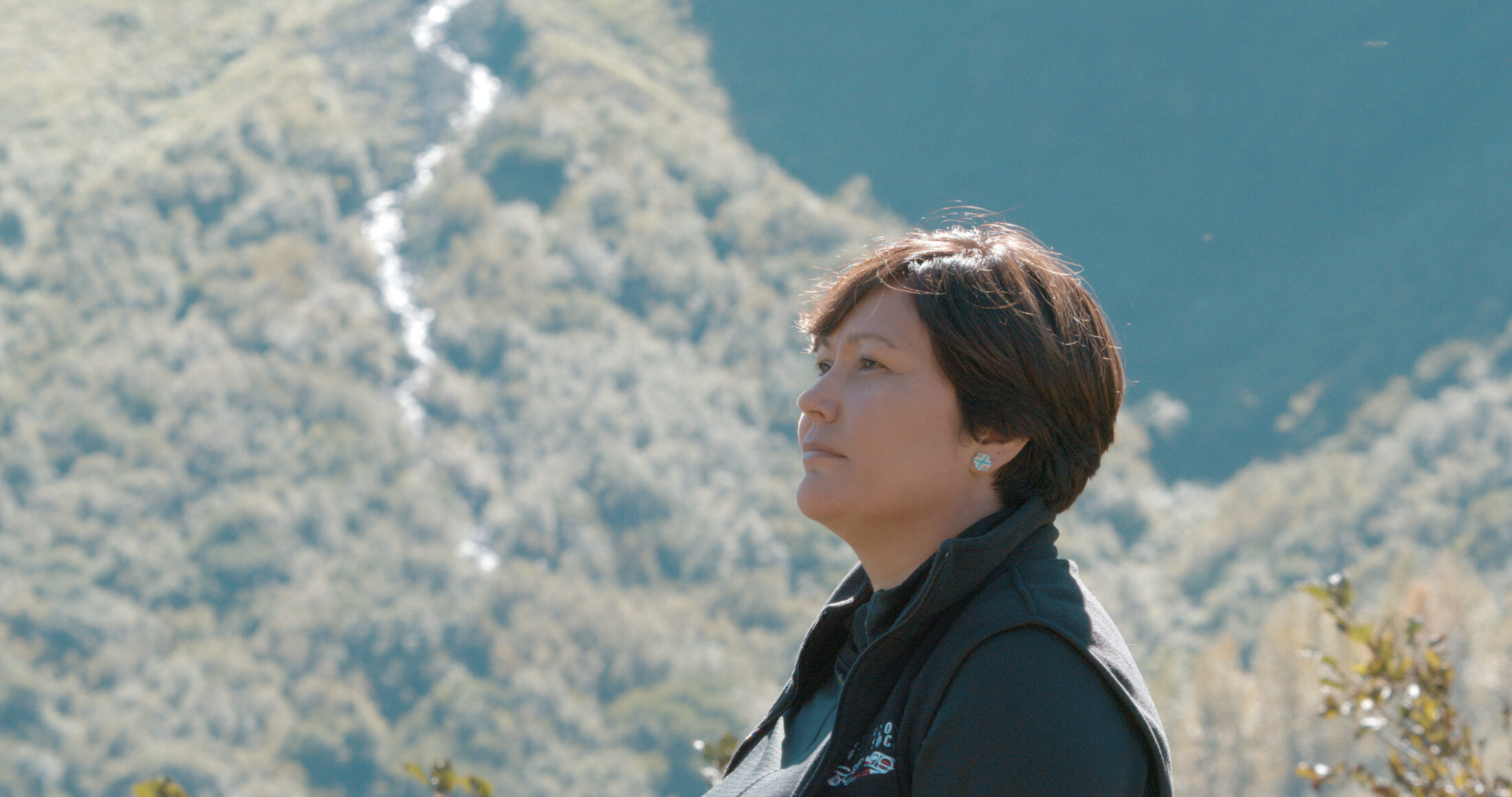
Naxginkw Tara Marsden. In the background is melting snowpack that feeds Strohn Creek. Photo: Farhan Umedaly / VoVo Productions
Marsden says she has empathy for industry, which needs some level of predictability to plan ahead. But while the original plan was designed to facilitate forestry activity, including the nation’s own logging interests, the objections to changing the plan come from mining operations.
“[Logging] companies have been able to operate quite well within the territory,” she says. “But this change doesn’t affect forestry, it just affects the mining companies, and they weren’t really involved — they never committed to any type of land planning.”
The increased mining activity is also a product of climate change. As glaciers recede, the exposed rock underneath is attracting the attention of prospectors, none of whom have consent from the Gitanyow.
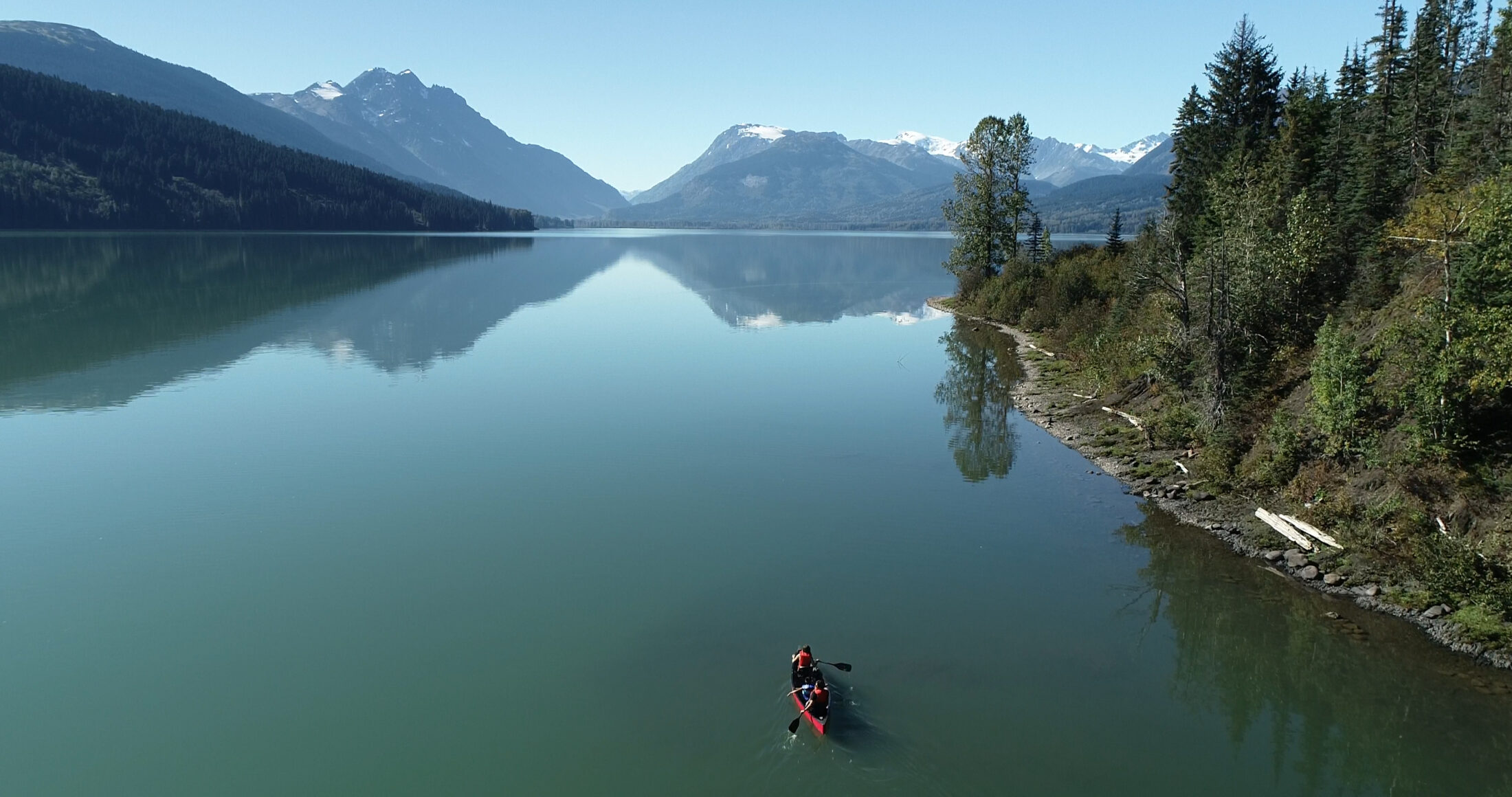
Naxginkw Tara Marsden paddles on Meziadin Lake with her children. Photo: Farhan Umedaly / VoVo Productions
B.C.’s free-entry mining system allows any individual or company to stake a claim — and subsequently explore for minerals on that claim — anywhere in the province that is not already set aside as a protected area. This includes private land and Indigenous territory. Under provincial laws, which date back to the mid-1800s, no consent or consultation is required.
“It’s so archaic. It’s so colonial,” Marsden says.
In the mid-2010s, mineral exploration and mining companies started staking claims on Gitanyow territory. A tenure allows a company to conduct exploratory work, and if it finds enough evidence of minerals, it can then propose a mine. But even exploratory work has impacts on the landscape, Marsden says.
“Mineral companies don’t have to apply for water permits — they can go out and they can draw straight from creeks for their drilling and then they can release the water back into the ecosystem,” she explains. “They can claim that it’s treated and it’s safe, but there’s no monitoring of that, so we don’t know.”
She says the Hereditary Chiefs petitioned the province to set up a no-staking reserve, taking government officials including Mark Messmer, B.C.’s chief gold commissioner, out on the lax’yip (territory). Marsden said subsequent conversations with the commissioner were unsuccessful in having the area declared off-limits for mining claims.
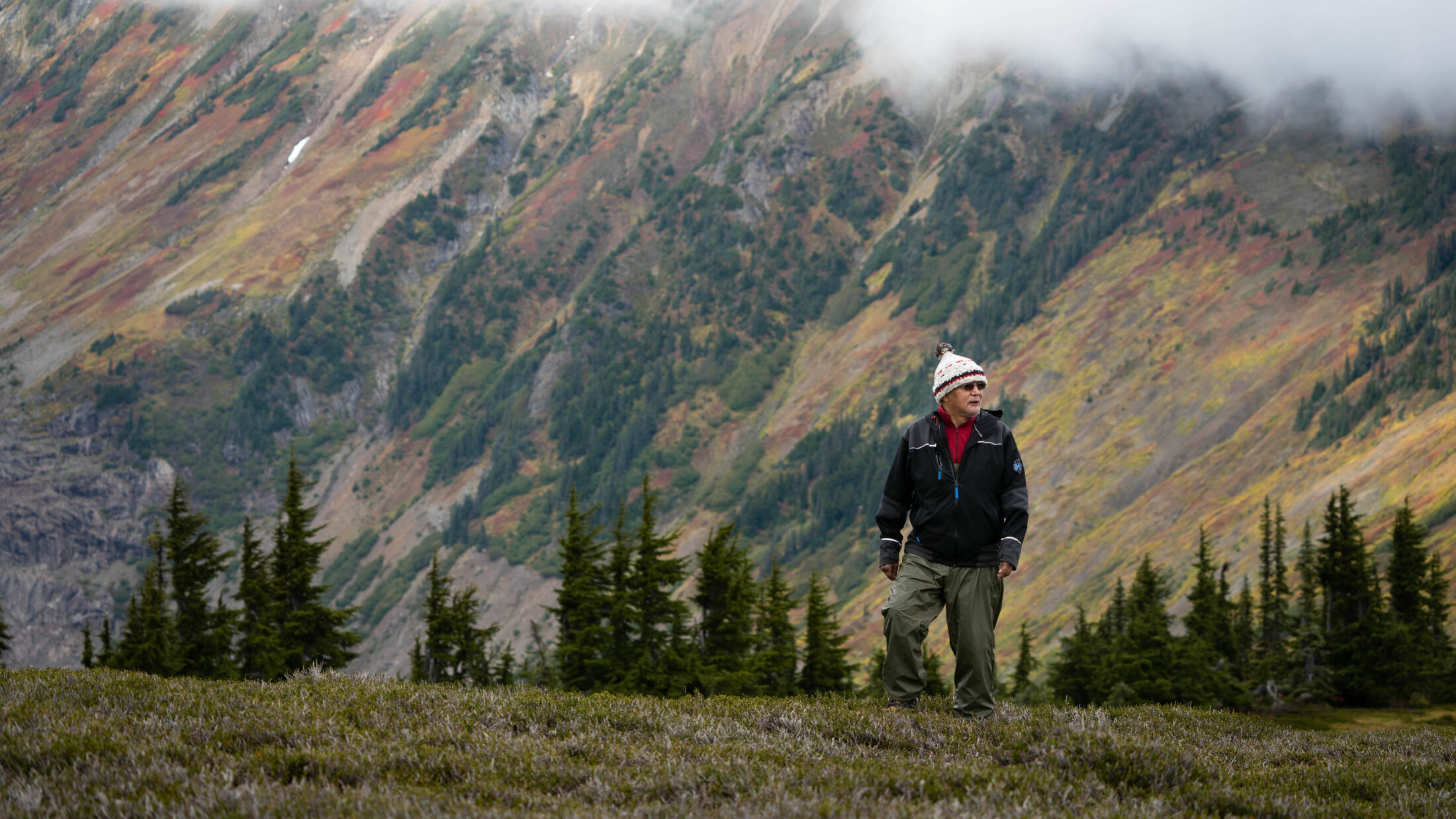
Chief Wii Litsxw (Gregory Rush) hiking in Gitanyow territory. The area behind him and to the left is part of the so-called “Golden Triangle,” coveted by mining companies. Photo: Farhan Umedaly / VoVo Productions
In 2019, the Gitanyow applied for funding through the federal government’s Nature Fund to buy out all the mineral tenures in the protected area. Marsden says the province provided them with the formula to figure out how much it would cost to get all the tenures out of the area, which revealed it would be between $5 and $16 million. The nation didn’t get the funding.
While working to find a solution through the provincial system, the Gitanyow Nation also developed its own guidelines for activity on the territory and reached out to the companies directly.
“We are very upfront when we talk to companies,” Marsden says. “We just say this is an area that is a go zone or a no-go zone, and this is why.”
This pragmatic approach has earned them some success. When the Hereditary Chiefs approached one of the companies that has claims in the watershed, P2 Gold, it agreed to leave the area alone.
“We’re trying to be good neighbours and work together up in the area,” Joe Ovsenek, president of P2 Gold, says on a call from his office in Vancouver, noting how the Gitanyow told his company the salmon runs in the creeks close to the company’s claims were the last healthy populations in the watershed. “The last thing we want to do is jeopardize any of that.”
But P2 Gold is just one of several companies with interests in the area, and the province continues to permit exploratory activity.
The Gitanyow’s Starlund emphasizes the nation is not anti-industry.
“We’re not against mineral staking, we’re not against mining,” he says, explaining that the Gitanyow have many positive relationships with mining companies. “It’s the matter of where these mineral staking tenures are located.”
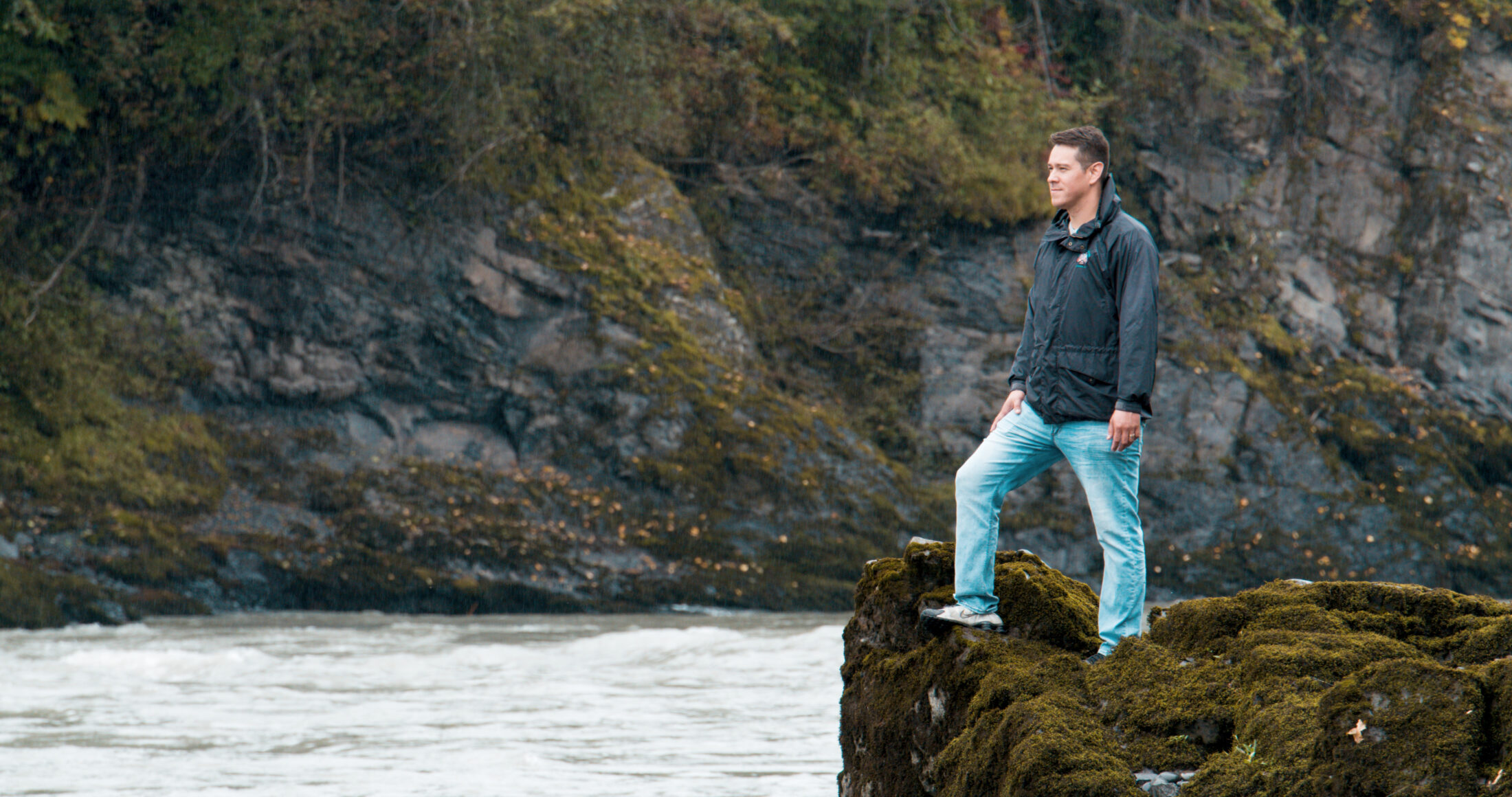
Wing Chief Sk’a’nism Tsa ‘Win’Giit Joel Starlund of the Gitanyow First Nation. Starlund says his nation is not against mining. “It’s the matter of where these mineral staking tenures are located,” he told The Narwhal. Photo: Farhan Umedaly / VoVo Productions
Starlund says the changes he’s seen on the landscape are sometimes subtle.
“It kind of sounds funny, but it’s the snow quality,” he says, naming one example.
The area used to get cold snaps with accompanying snowfall in February that would create a hard crust on top of the snowpack, he explains, effectively locking in the snow for gradual release during the spring melt. “But that’s changing now — the crust is coming a little bit earlier, and all the snow is different. That’s impacting how long the snow is slowly melting and keeping the streams cool and salmon friendly.”
Starlund says he’s relieved the sockeye are surviving in the territory, despite the impacts that are decimating populations across the province.
“We’re just so fortunate that Mother Nature had some sort of backup in place in this watershed,” he says. “We have a second chance to get it right this time and to do it early.”
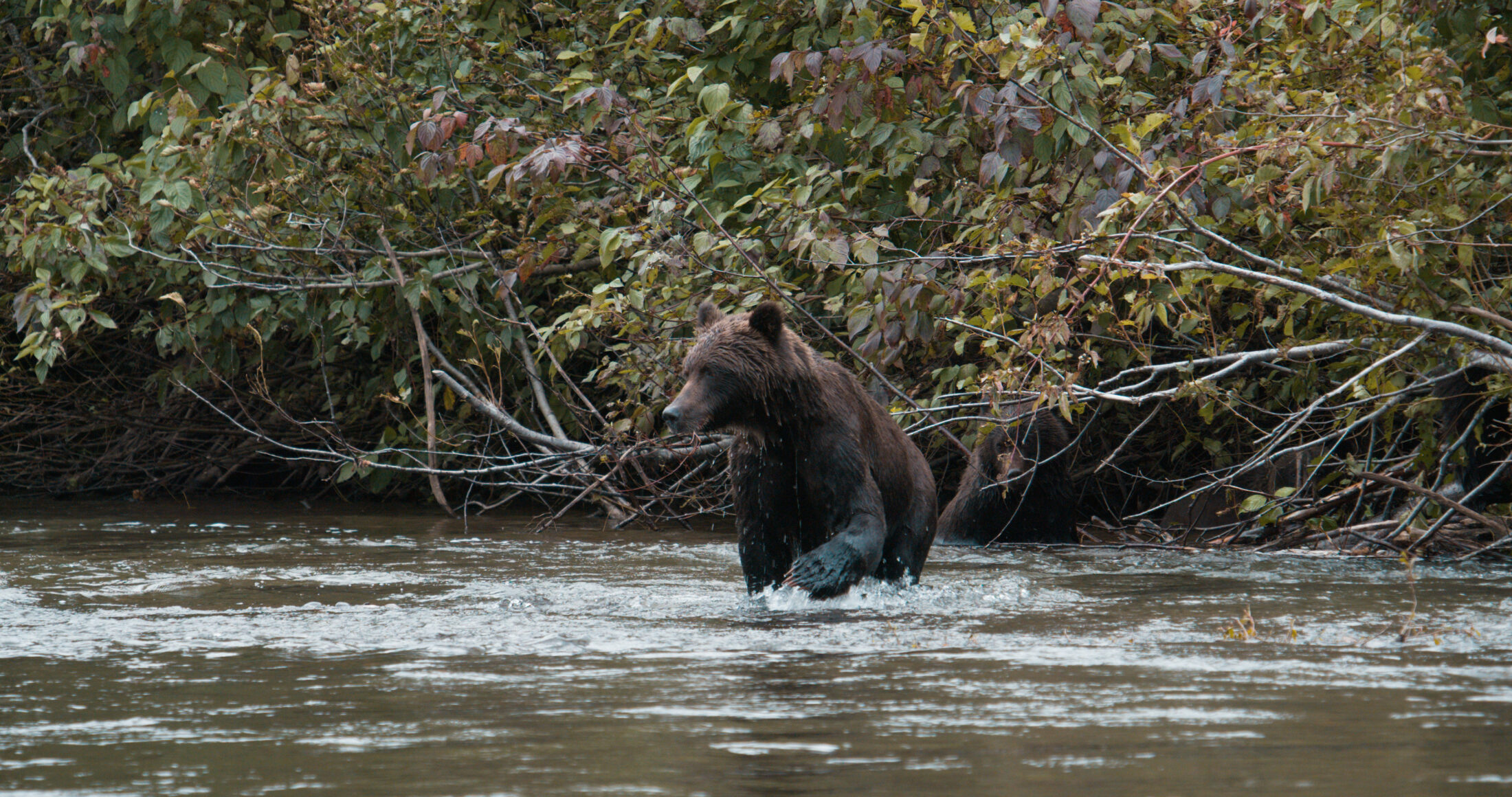
A female grizzly with her cub on the territory. Declining salmon populations impact species like grizzlies, who rely on the fish for food. Photo: Farhan Umedaly / VoVo Productions
The Gitanyow Nation is now developing its own protection, following examples set by other First Nations across Canada.
“Unfortunately, with the development of conservancies and national parks, the fairly recent history has been removing Indigenous people from those areas and not allowing them to practise their traditions — food harvesting and ceremonies,” says Heiltsuk Hereditary Chief Dhadhiyasila Frank Brown, who’s a member of the Indigenous Leadership Initiative. “But IPCAs differ in that [they] create those opportunities to continue to practise these processes, to exercise customary practices.”
As an example of why Indigenous Protected and Conserved Areas are important, Brown explains how Heiltsuk ancestors would take care of the ecosystem, doing things like transplanting salmon from one stream to another to support the populations, an activity that would be prohibited in provincial or national parks.
“This goes back to deep time when Raven transplanted herring from one part of our territory to another part of the territory,” he says. “If we combine the best of what Western science has to offer with local and Traditional Knowledge, we can help to create the necessary refugia — places to protect biodiversity. Because cultural diversity and biodiversity directly mirror each other.”
He adds that Indigenous Protected and Conserved Areas are a necessary reaction to climate change.
“We have an opportunity to bring something to benefit not only ourselves, but other Canadians and other citizens of the world in setting aside these critical sanctuaries that will preserve our biodiversity and then, by association, preserve ourselves as a species.”
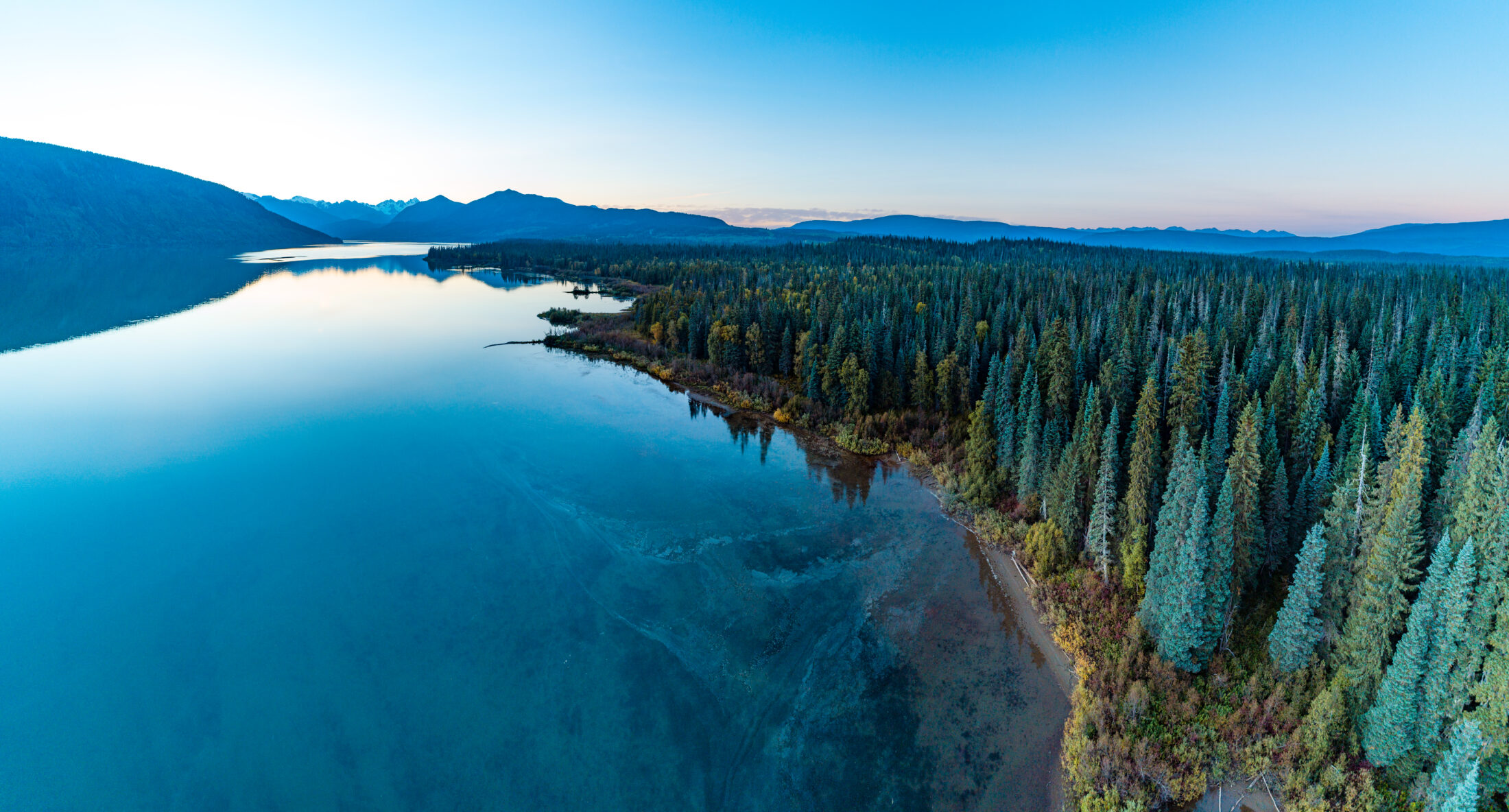
Meziadin Lake. The area to the right is currently protected by the Hanna-Tintina Conservancy. Photo: Farhan Umedaly / VoVo Productions
Marsden says the next step is to create a management plan for the area that clearly states what activities are allowed and what activities are not allowed. Then it’s a matter of making sure those rules are being respected. Without provincial protection, Gitanyow guardians will have to continually monitor activity on the landscape to hold companies accountable.
“I’m pretty confident that we can,” she says. “It’s just not ideal. Ideally, you have those legal designations.”
Starlund is also confident the Gitanyow can protect the watershed and says they’ll gain strength from sharing what makes the lax’yip special.
“If we’re not going to be afforded the protection of British Columbia law, we want to create a brand and a name recognition for this Indigenous Protected Area,” he says, adding that they hope to have everything in place by August.
“It’s a beauty that’s beyond Eden.”
Get the inside scoop on The Narwhal’s environment and climate reporting by signing up for our free newsletter. On March 17, federal Conservative Leader Pierre Poilievre...
Continue reading
Conservative Leader Pierre Poilievre says he’ll fast-track approvals and scrap key rules that protect the...

One LNG project alone is requesting more than half the amount of electricity B.C.’s Site...

In Georgian Bay, First Nations youth are coming together over hide tanning, language lessons and...
